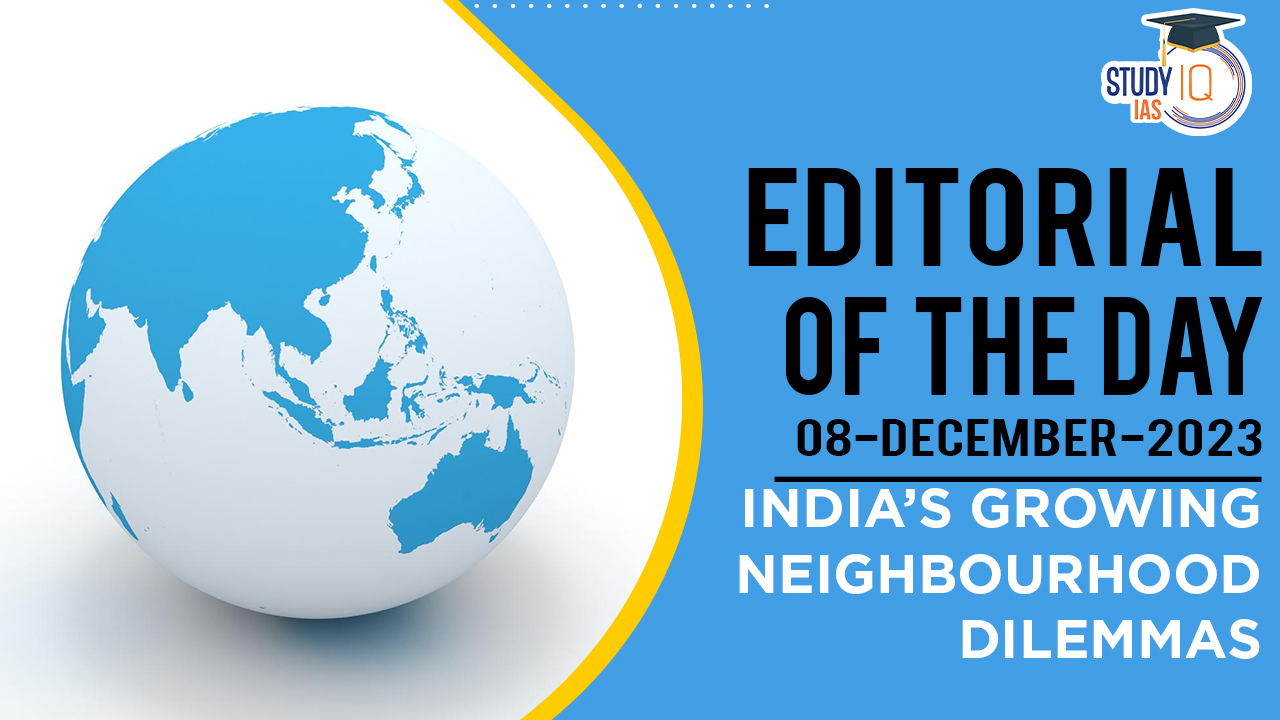Context: Most South Asian states are sceptical of India’s primacy in their own ways.
India’s Growing Neighbourhood Dilemmas Challenges
- Rise of anti-India regimes: The Maldives government’s anti-India stance and the potential for a Khaleda Zia-led government in Bangladesh to be ideologically anti-India pose significant challenges.
- China’s growing influence: China’s increasing involvement in the region through the Belt and Road Initiative and other projects, its outreach to ostracised states like Myanmar and Sri Lanka, and its successful border settlements (except with India) create a potential for a China-centric South Asia.
We’re now on WhatsApp. Click to Join
Causes
- Shifting geopolitical landscape: The diminishing presence of the US and the rise of China have created a power vacuum that China readily fills. Smaller states leverage this power shift by playing the “China card” to their advantage.
- India’s limited material resources: Compared to China’s economic prowess, India’s ability to provide for the region’s material needs is limited, making China a more attractive partner.
- China’s non-normative approach: China offers itself as an alternative to India’s normative and political approach, attracting states that seek to avoid scrutiny and prioritise economic gains.
- Spillover effects of being a resident power: India’s long-standing dominance in the region comes with challenges like cultural clashes, ethnic tensions, and refugee crises, which China avoids as a non-resident power.
- India’s policy stance: India’s focus on maintaining the status quo and engaging primarily with ruling governments alienates other power centres and potential allies.
- Mistaken assumptions: The belief that South Asia minus Pakistan would be amenable to India’s influence and that India’s cultural connection would ensure regional loyalty have proven inaccurate.
Way forward
- Acknowledge the new reality: India must accept that South Asia has changed and China is now a major player. This realistic understanding is crucial for navigating the new power dynamics.
- Seek external support: Inviting friendly external actors like the US can help counter China’s growing influence and prevent the region from becoming Sino-centric.
- Engage multiple actors: Indian diplomacy needs to be flexible and engage with various actors within each neighbouring country, including those who may not be pro-India.
- Address diplomatic staff shortage: India urgently needs to increase its diplomatic staff to effectively implement its foreign policy and respond to regional developments.


 World Day for International Justice 2025...
World Day for International Justice 2025...
 Anusandhan National Research Foundation ...
Anusandhan National Research Foundation ...
 Places in News for UPSC 2025 for Prelims...
Places in News for UPSC 2025 for Prelims...





















